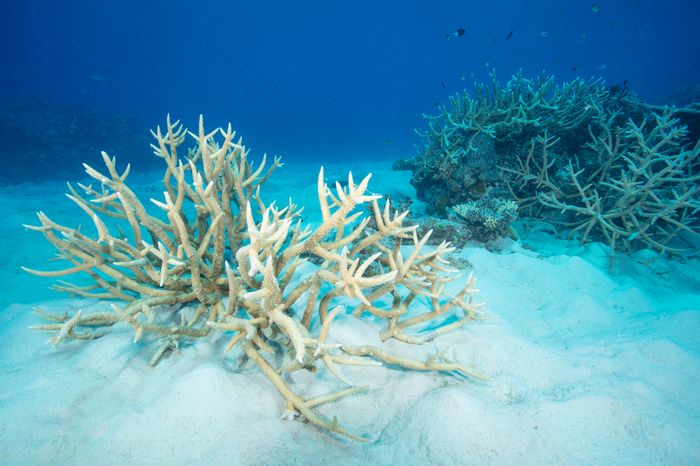Two-thirds of Australia’s Great Barrier Reef recorded the highest amount of coral cover in nearly four decades, a development cheered around the world but one that shouldn’t overshadow how vulnerable the reef remains to climate change and mass bleaching.
On the central and northern regions, hard coral cover reached 33% and 36% this year, respectively, the highest level recorded in the past 36 years of monitoring, the Australian Institute of Marine Science, a government agency, said this week.
Still, hard coral cover on reefs in the southern area fell to 34% this year, compared with 38% in the year prior.
The Great Barrier Reef, rich with wildlife and a major tourist draw, has suffered from widespread and severe bleaching because of rising ocean temperatures. The reef was greatly damaged in 2016 and 2017 by underwater heat waves aggravated by climate change.
The reef provides $6.4 billion a year to the Queensland and Australian economies and generates 64,000 jobs in fishing, tourism and more, according to the Great Barrier Reef Foundation. The Australian government has spent on its restoration.

Bleached coral kills eliminates valuable nutrition and is damaging to whole ecosystems. Coral reefs are home to 25% of the world’s marine species — they’re like the Amazon rainforest of the seas.
Getty Images/iStockphoto
The Great Barrier Reef, so vast it can be seen from space, is made up of 2,900 separate reefs and 900 islands. It struggles to recover when there is not enough time between bleaching events.
“The reef is now suffering widespread bleaching damage at the rate of more than once every two years,” Richard Leck, the head of Oceans Australia for the World Wildlife Fund (WWF), said earlier this year.
“Coral bleaching is directly attributable to climate change caused by rising global greenhouse gas emissions. Reducing Australia’s domestic and exported emissions fast, this decade, is the main solution within our control,” he said.
Paul Hardisty, CEO of the marine institute that put out this week’s findings, said the results in the north and central regions were a sign the reef could still recover, but the loss of coral cover in the southern region showed how dynamic the reef is. The heat disturbance, for instance, has brought on outbreak of crown-of-thorns starfish.
Hardisty said the increased frequency of mass coral bleaching events was “uncharted territory” for the reef, with this year’s bleaching event the fourth in seven years and the first to occur during a cooling La Niña.

By 2014, populations of marine mammals, birds, reptiles and fish had dropped by about half in the past four decades, with fish critical to human food suffering some of the greatest declines, the WWF said.
AFP via Getty Images
Still, some social media responses Friday to the news argued that the data belies the notion that climate change won’t allow Earth to regenerate.
UNESCO last year proposed adding the Great Barrier Reef to a list of world heritage sites that are in danger. A meeting to discuss the future of the reef was supposed to be held in Russia in June, but it was canceled after the invasion of Ukraine.
